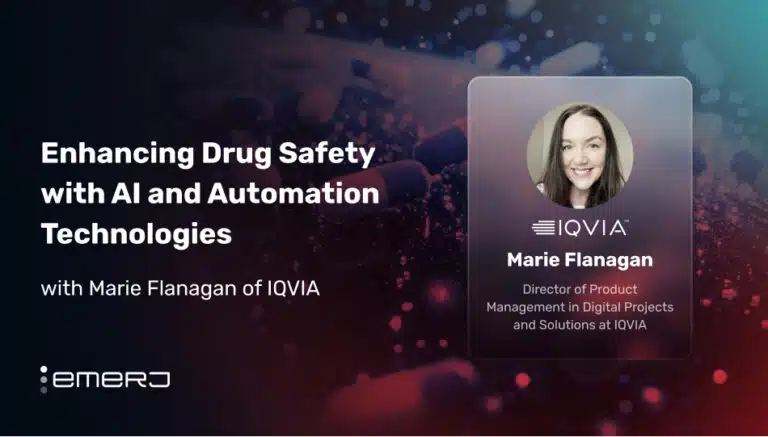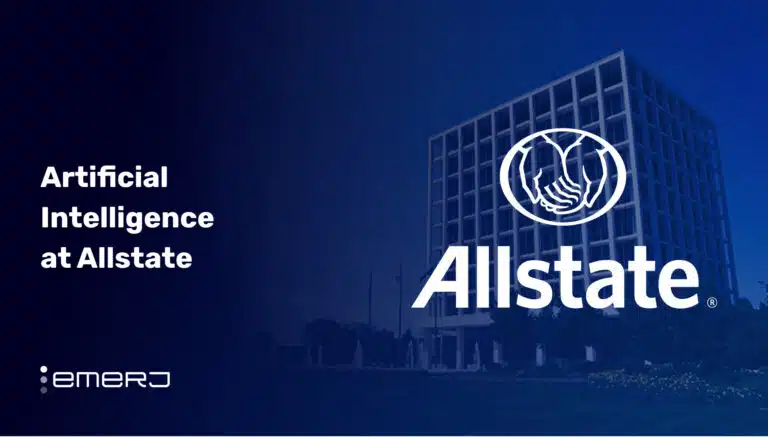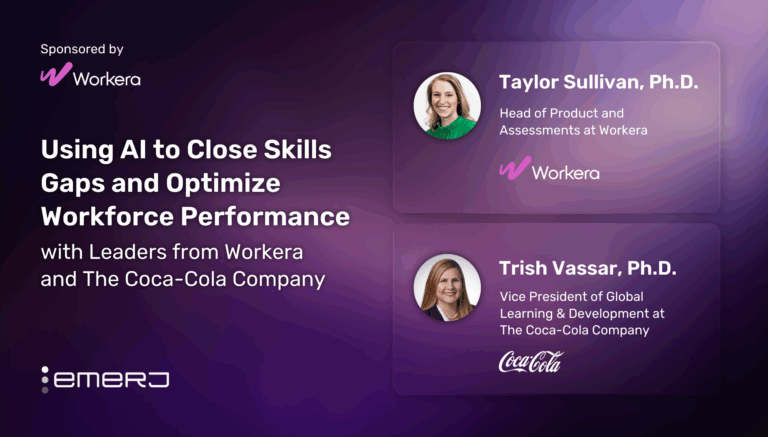As life sciences organizations increasingly adopt AI to enhance productivity, streamline workflows, and improve quality, aligning AI initiatives with business objectives and evolving traditional return on investment (ROI) metrics have become essential strategies. These practices not only secure executive buy-in but also ensure sustained success in AI adoption.
The McKinsey Global Institute (MGI) projects that AI technology could create between $60 billion and $110 billion annually in economic value for the pharmaceutical and medical product sectors. Their reporting also notes that AI value stems from the technology’s ability to enhance productivity, particularly by expediting the identification of compounds for new drugs, accelerating their development and approval processes, and optimizing marketing strategies.
According to the National Institute of Health, life sciences firms are deploying advanced AI models to drive efficiencies in supply chain management to address challenges in planning, procurement, financing, stock levels, and driving marketing synergies.
Emerj Senior Editor Matthew DeMello recently spoke with Shreyas Becker, Head of AI and Data Products in Manufacturing and Supply at Sanofi, on the AI in Business podcast about what supply chain leaders in life sciences spaces need to know to win executive buy-in for such initiatives, and how to drive AI success in pharmaceutical manufacturing.
This article explores two critical insights from their conversation with business leaders across logistics, manufacturing, and life sciences spaces:
- Aligning AI initiatives with stakeholder objectives: Understanding stakeholder priorities through an agreement-based approach is essential to ensure that AI efforts deliver strategic value, minimizing the risk of pursuing projects that don’t directly support organizational needs.
- Shifting ROI metrics from outcomes to process optimization: Measuring AI’s impact in systems of action by the efficiency gains it drives in business workflows, allowing organizations to continuously optimize inputs rather than solely targeting final results, fostering sustained improvements over time.
Together, these approaches highlight the need for a strategic roadmap that prioritizes stakeholder goals and continuous improvement.
Listen to the full episode below:
Guest: Shreyas Becker, Head of AI and Data Products in Manufacturing and Supply, Sanofi
Expertise: Supply Chains, Logistics, Manufacturing, Pharmaceutical Production
Brief Recognition: Before joining Sanofi, he served as a Senior Manager of Products at Neo Financial and held various roles at BCG, PwC, Best Buy Canada, Mu Sigma, and TED Conferences. His diverse experience spans multiple industries, focusing on product management and data-driven innovation.
Aligning AI Initiatives with Stakeholder Objectives
Shreyas begins his podcast appearance by noting that at Sanofi, securing buy-in for AI initiatives is facilitated by a strong executive focus on innovation, particularly in the realm of artificial intelligence. The company’s CEO has been vocal about the value and potential of AI, making it easier to gain internal support compared to other organizations.
However, Shreyas underscores that the challenge lies in managing the vast interest in AI within the organization and prioritizing the most impactful projects.
Rather than pitching new AI concepts, the AI team at Sanofi adopts a collaborative, stakeholder-driven approach. They invest time in understanding the specific objectives of business stakeholders, such as global productivity or quality improvement initiatives, and tailor their AI programs to align with these goals.
By listening to what stakeholders need and presenting viable AI solutions that fit their agendas, the team builds a roadmap based on mutual agreement, ensuring that AI projects are directly tied to business priorities. This method emphasizes alignment with organizational goals rather than promoting innovation for its own sake, fostering a more strategic and effective deployment of AI.
To achieve such synergy with stakeholders, Shreyas first stresses that successful AI adoption in life sciences requires more than just enthusiasm for the technology. Securing executive buy-in and driving impactful projects involve aligning AI initiatives with clear stakeholder priorities and measurable business goals centered around a small number of pain points rather than a multitude of technological capabilities engendering that excitement.
While encouraging a spirit of experimentation, he makes a comparison to the SaaS vendor space to promote a focus on solving real business problems rather than technological applications just for the sake of it:
“That’s the only exception that I see because when we go out there and ask people, ‘Hey, what do you want?’ The first answer is, ‘I have these 30 things that I have played around with. Which of these 30 things makes more sense for me to scale,’ versus people saying, ‘I have these five main pain points; help me solve the top one.’
So there is some gap between, let’s say, selling enterprise software: The pain is almost always like an unknown pain that you’re trying to sell to, but in terms of AI, the pain is very well known. It’s just how you solve the pain that’s still unknown to a lot of people.”
– Shreyas Becker, Head of AI and Data Products in Manufacturing and Supply at Sanofi
Proper alignment on pain points helps minimize the risk of pursuing projects that don’t directly support organizational needs and ensures that AI investments deliver maximum value.
Shreyas espouses a collaborative, agreement-based approach to AI roadmap development as vital for aligning initiatives with stakeholder objectives. Deploying such a strategy involves working closely with different departments to understand their goals and design AI solutions that address specific needs, such as productivity enhancement, quality improvements, or regulatory compliance.
By focusing on these well-defined objectives, organizations can secure buy-in from business leaders who recognize the direct benefits of AI efforts.
As an example, Shreyas suggests that an AI project could be designed to improve the efficiency of manufacturing processes by automating quality checks. By aligning the project’s goals with the quality assurance department’s objectives, the organization ensures the initiative is strategically valuable and meets a genuine need.
While there may be significant executive interest in AI, Shreyas notes directly from his experience at Sanofi that not all initiatives can be pursued simultaneously. He advises setting realistic expectations, which is crucial to avoiding the spread of resources across too many projects, which can dilute the impact. Prioritization enables organizations to allocate resources effectively to initiatives with the highest potential for measurable benefits.
However, even when business challenges are well-defined, the most effective solutions are only sometimes clear.
Shifting ROI Metrics from Outcomes to Process Optimization
Traditional approaches to measuring AI success often focus on end outcomes, such as cost reductions or increased sales. While these metrics are important, shifting the focus to process-oriented metrics can better capture AI’s value. Measuring AI’s impact by the efficiency gains it drives in business workflows allows organizations to continuously optimize inputs and achieve sustained improvements.
Shreyas stresses that AI systems should be evaluated based on their ability to drive specific actions within the organization, such as reducing production times or enhancing regulatory compliance. This “system of action” approach emphasizes AI’s role in influencing day-to-day operations and behavior rather than merely analyzing data or storing information.
He distinguishes well-known action-oriented systems and what he calls “systems of record”:
“At a very high level, there are only two types of systems that you could build with technology. You could either build systems of record or you could build systems of action. AI is usually a system of action. What I mean by this is when you think of something like Salesforce or when you think of AWS, they are systems of record. They are used to store information. When you think of the interface that you see on Netflix, it’s a system of action. It makes you go and do something.
A lot of things that you build with AI are systems of action. When you think about measuring ROI, you need to be very, very clear on what specific action that you’re focused on. If the action that you’re focused on is increasing productivity, then yield is probably something you’re interested in. If the action that you’re focused on is the supply chain, then you have to start worrying about lost sales. You have to start worrying about how often I refill my inventories and so on.”
– Shreyas Becker, Head of AI and Data Products in Manufacturing and Supply at Sanofi
When asked about how especially generative AI (GenAI) capabilities are making a lot of these technologies invisible to the naked eye, Shreyas emphasizes that transitioning to process-oriented metrics enables organizations to measure incremental improvements over time.
He notes that this marks a watershed moment in the deployment of AI over the last decade:
“When AI first came around, it it was very, very outcome-focused AI. But now, if you go talk to experts, they’re all talking about, ‘This is my process, and these are my inputs to the process, and I’m trying to optimize every single input that goes into the process so that my output is going to be great.’
So, I’ve seen a huge paradigm shift in the last five to seven years. Instead of blindly trying to optimize the outcomes of a process, people are trying to focus on all the inputs into the process. And I think that shift is here to stay.”
– Shreyas Becker, Head of AI and Data Products in Manufacturing and Supply at Sanofi




















